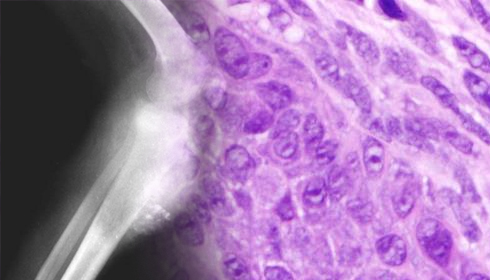
Understanding Synovial Sarcoma: Signs, Reasons for Importance, Treatments, and Recent Developments
Synovial sarcoma is a rare and deadly type of cancer that starts in soft tissues, most often near the joints in the neck, arm, or leg. Despite its name, it doesn't always start in the synovial tissues that cover the joints. It can happen all over the body in muscles, ligaments, tendons, and other tissues. This type of sarcoma typically affects young adults and teens, causing significant concern for those age groups.
What are the signs of it?
The mild symptoms of synovial sarcoma often lead to misdiagnosis due to their similarity to less dangerous conditions. A lump or growth that appears in the affected area is a common sign. It may or may not be painful. As the growth progresses, the limbs may experience pain or tenderness, become difficult to move, or become numb or weak. As the disease gets worse, some people may feel tired, lose weight, or have other systemic signs.
Understanding synovial sarcoma is crucial.
Understanding synovial sarcoma is critical because it is severe and typically affects older people. Early diagnosis and detection can make the prognosis and treatment outcomes much better. Making more people aware of this rare cancer helps individuals spot signs early, so they can get medical help right away. Additionally, increased knowledge stimulates research and funding for improved treatments, aiming to improve patients' chances of survival and quality of life.
What kinds of treatments are there?
Treatment for synovial sarcoma typically involves a combination of surgery, radiation treatment, and chemotherapy. The first step is usually surgery to remove the growth and try to get rid of as much cancer as possible. Radiation treatment can shrink the tumor before surgery and kill any remaining cancer cells after surgery. Chemotherapy can kill cancer cells that have spread to other parts of the body. Treatment for the tumor depends on its size, location, and stage, as well as the overall health of the patient.
What is the most recent advancement in the treatment of synovial sarcoma?
New developments in the treatment of synovial sarcoma give people hope for better results. Targeted treatments are one of the most exciting new ideas. They try to kill specific molecules that help cancer cells grow and stay alive. Researchers are also exploring immunotherapy as a potential cure. This uses the immune system to fight cancer. There are currently ongoing clinical studies to see how well these new methods work. Some of them show promise in terms of extending survival and lowering the rate of recurrence.
Finally, synovial sarcoma is uncommon, but it causes a lot of problems because it is very active and usually affects younger people. To effectively manage this dangerous disease, it is important to be aware of its symptoms, know how important early detection is, and stay up-to-date on treatment choices and the latest research. In the fight against synovial sarcoma, more study and progress in medical science are very important because they give patients and their families hope.